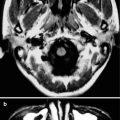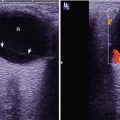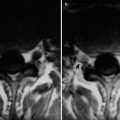(1)
Radiology Department Beijing You’an Hospital, Capital Medical University, Beijing, People’s Republic of China
Abstract
Evidence based medicine (EBM) is a concept combining clinicians’ personal professional knowledge, the optimal clinical evidence available, and the choice of patients to guide clinical practice and make the best clinical decision. The core idea of EBM is to seriously and cautiously apply the latest and optimal information gained from clinical studies to diagnose and treat patients. The three fundamental factors of EBM are to seek, evaluate and correctly use evidence. The significance and necessity of evidence in decision-making is emphasized. The rapid development of new techniques and methods of modern medical imaging provides more and more information for clinical practice. The symptoms of AIDS patients are complex, usually with involvements of multiple systems, multiple organs, and diverse pathogens simultaneously or successively. Therefore, the diagnosis of AIDS patients depends on various investigations, in which diagnostic imaging is the primary method to obtain clinical evidence. How to start from clinical symptoms to select appropriate diagnostic imaging methods for persuasive evidence of HIV/AIDS is a new subject for radiologists. The method and thinking way of EBM offers essential reference for HIV/AIDS imaging in clinical practice.
Keywords
Evidence Based Medicine9.1 Tasks of Evidence Based AIDS Imaging
Evidence based medicine (EBM) is a concept combining clinicians’ personal professional knowledge, the optimal clinical evidence available, and the choice of patients to guide clinical practice and make the best clinical decision. The core idea of EBM is to seriously and cautiously apply the latest and optimal information gained from clinical studies to diagnose and treat patients. The three fundamental factors of EBM are to seek, evaluate and correctly use evidence. The significance and necessity of evidence in decision-making is emphasized. The rapid development of new techniques and methods of modern medical imaging provides more and more information for clinical practice. The symptoms of AIDS patients are complex, usually with involvements of multiple systems, multiple organs, and diverse pathogens simultaneously or successively. Therefore, the diagnosis of AIDS patients depends on various investigations, in which diagnostic imaging is the primary method to obtain clinical evidence. How to start from clinical symptoms to select appropriate diagnostic imaging methods for persuasive evidence of HIV/AIDS is a new subject for radiologists. The method and thinking way of EBM offers essential reference for HIV/AIDS imaging in clinical practice.
9.2 Relationship Between AIDS Imaging and Evidence Based Medicine
Evidence based medicine (EBM) is a practical pattern and thinking methodology for clinical medicine rather than a specific method or technique to solve a clinical problem. The three principles of EBM are optimal evidence available as the basis of decision-making; clinicians’ personal professional knowledge as professional support; patients’ benefits and needs as the supreme goal. The five steps of EBM include: (1) evidence retrieval; The primary evidence is from original research articles including experimental research articles and observational research articles. The secondary evidence is from comprehensive analysis and reviewing based on the original research articles, including Meta-analysis, systematic review, reviews, commentaries and case histories correctly collected as the first-hand clinical data. (2) questions raising; Based on the clinical data and imaging findings of patients, one or several questions with potentials to be resolved are raised to establish the research key terms. Data being closely related to the clinical questions is then retrieved in authorities literatures for further review and analysis. (3) evidence assessment; It is mainly based on the authenticity and clinical importance (assessed by clinical epidemiology and the principles of EBM). (4) evidence application; The clinical cases vary in terms of gender, age, HIV/AIDS related diseases, the severity and course of these diseases, patients’ compliance, social factors, cultural backgrounds, biological and clinical characteristics. Authentic and reliable evidence with clinical value is not necessarily appropriate to all patients. Rather, comprehensive analysis is necessary to combine professional clinical knowledge, physical and mental conditions of each patient, selections of the patients. The application of the evidence should be adjusted accordingly to assess the reliability and authenticity of the evidence using epidemiologic and EBM standards. (5) Intervention outcomes assessments. The discrepancies between the real intervention outcomes and expected intervention outcomes should be assessed. The reasons for the discrepancies should be analyzed to improve the standardization of clinical decision making. The optimal clinical evidence should be applied to guide the clinical practice.
Stay updated, free articles. Join our Telegram channel

Full access? Get Clinical Tree







